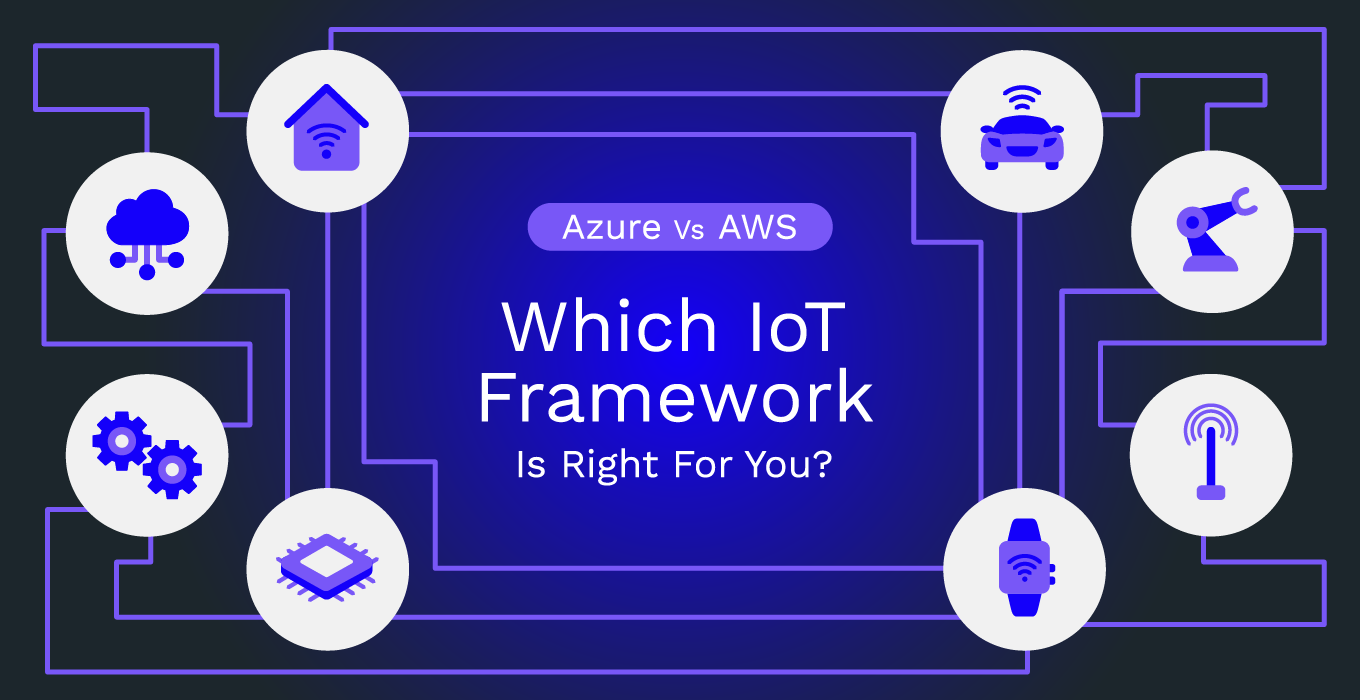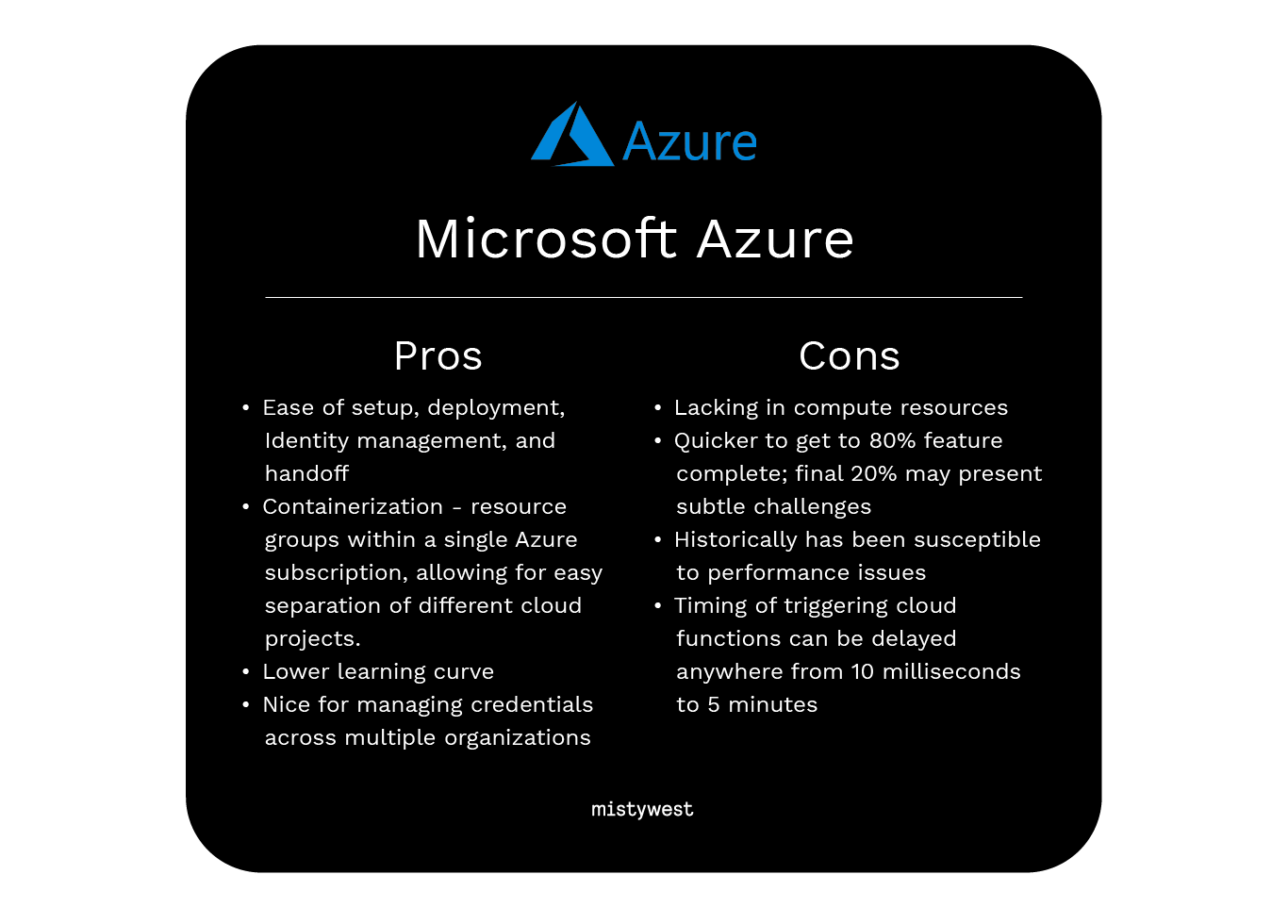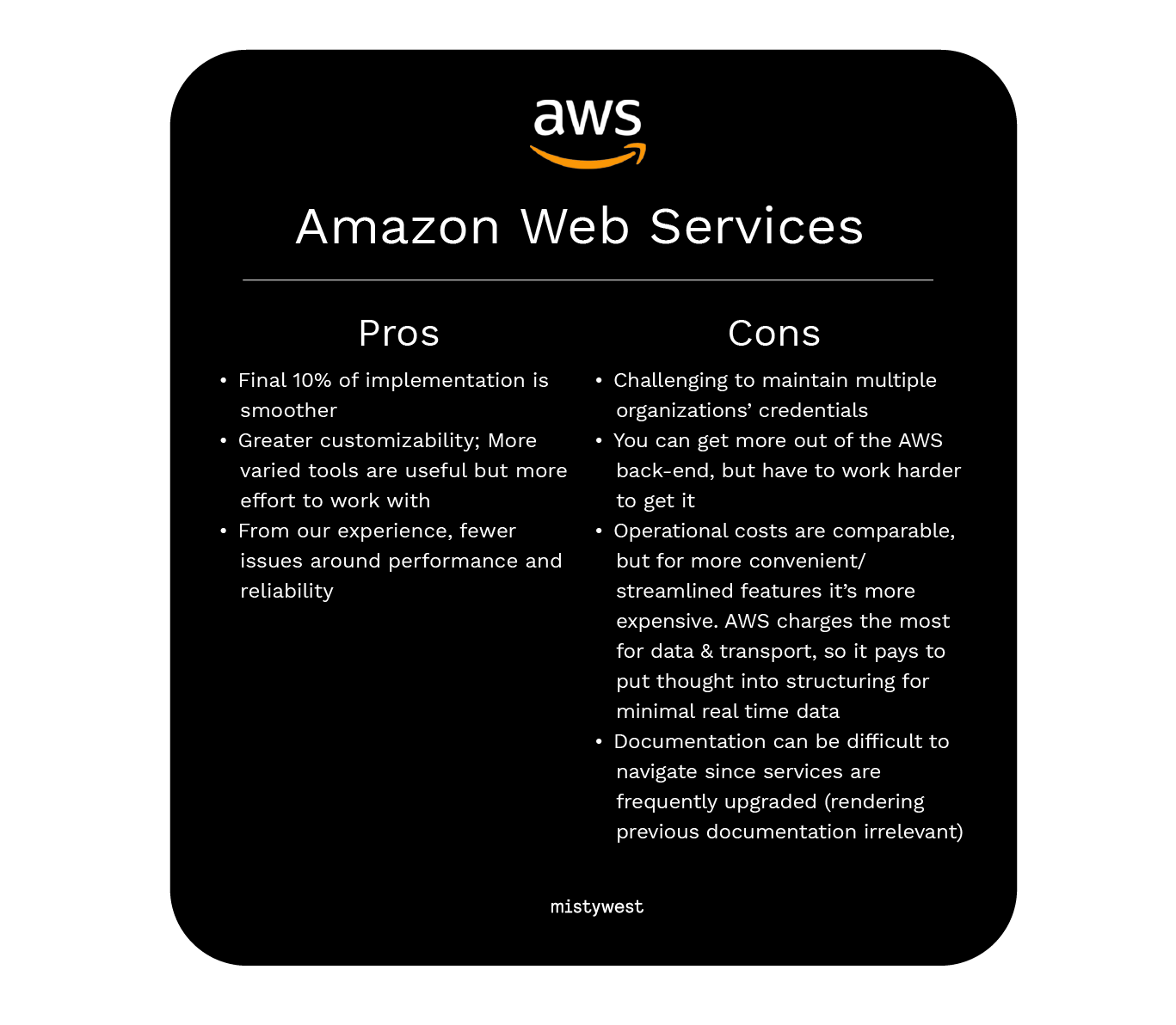
BLOG
Azure Vs AWS: Which IoT Framework is Right for You?
The Internet of Things (IoT) has seen extensive growth in the past few years, and the number of connected devices is projected to amount to 21.5 billion units worldwide by 2025. Choosing the right IoT platform to connect your devices is no easy task, and weighing the advantages and disadvantages between them is crucial to making sure your system’s architecture is designed to meet the demands of your application. Nobody wants to select the wrong platform for their business, as it can be costly to develop a solution and learn halfway about a deal-breaking limitation. Here at MistyWest, we can help you make the best decision for your business.

Two of the most popular IoT products, Microsoft Azure and Amazon Web Services (AWS), frequently go head-to-head in battle to be chosen as customers’ cloud provider of choice. MistyWest has experience rolling out architectures on both platforms, as well as addressing limitations in each of the services. A recent project included a project for a Y Combinator-backed company, where we were asked to develop their cloud-based infrastructure on AWS to enable automatic data retrieval and over-the-air updates on the client’s deployed remote IoT devices. In another project, we developed the infrastructure on Azure to enable an automated, cloud-connected image collection and processing pipeline for a medical device startup. In both these scenarios, the clients came to us with existing requirements for which IoT cloud provider to use; in other scenarios, we often recommend one over the other based on the needs of your application. If you have yet to pick one, we want to help you make that decision.
At a high-level, let’s take a look at what each platform has to offer and share some insights based on our experience with both.
Azure
Azure Pros
- Ease of setup, deployment, Identity management, and handoff
- Containerization – resource groups within a single Azure subscription, allowing for easy separation of different cloud projects.
- Lower learning curve, and available development solutions
- Nice for managing credentials across multiple organizations
Azure Cons
- Lacking in compute resources
- Quicker to get to 80% feature complete; final 20% may present subtle challenges
- From our experience, has been susceptible to performance issues (delays in timing of triggering cloud functions) and outages (March 24 due to increased traffic from COVID-19, Sep 28 for the Active Directory authentication)

Amazon Web Services
AWS Pros
- Final 10% of implementation is smoother
- Greater customizability; More varied tools are useful but more effort to work with
- From our experience, fewer issues around performance and reliability
AWS Cons
- Challenging to maintain multiple organizations’ credentials
- You can get more out of the AWS back-end, but have to work harder to get it
- Operational costs are comparable, but for more convenient/streamlined features it’s more expensive. AWS charges the most for data & transport, so it pays to put thought into structuring for minimal real time data
- Documentation can be difficult to navigate since services are frequently upgraded (rendering previous documentation irrelevant)

For a detailed comparison of the equivalent services between Azure and AWS, see the official Microsoft documentation.
Conclusion
For medical, government, and other large enterprise organizations who are already integrated into Microsoft’s ecosystem, Azure is typically preferred due to Microsoft’s strong presence in enterprise-focused industries. Organizations that have already bought into Microsoft’s suite of products will be able to transition easily to Azure with little hassle. However, if control and innovation are top priorities, AWS is a leading contender with its unique products and customizability, at the expense of a longer initial development time and potentially steeper learning curve (as new services are released).
As with all complex decisions, it ultimately depends on your application and use case to determine what trade-offs are acceptable. Both are worthy platforms, and MistyWest can provide guidance in whichever platform you choose (or require assistance with).